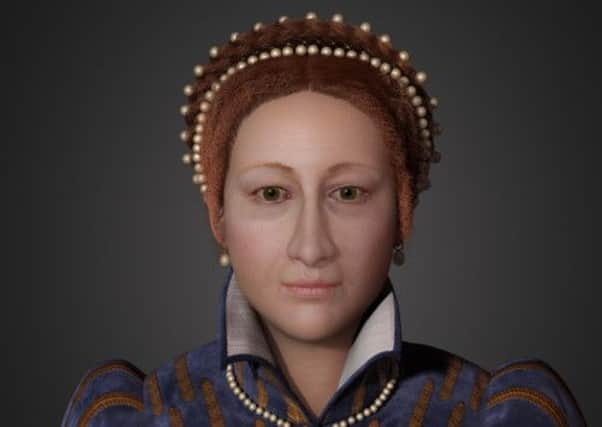Tiffany Jenkins: Respecting jewels in heritage crown


One of the exhibits in the Mary Queen of Scots exhibition at the National Museum of Scotland is a collection of a gold necklace, locket and pendant, known as the Penicuik jewels, thought to have belonged to the executed monarch. These jewels are believed to have been given to the Queen when she was held captive. They were gifts of loyalty – much more than mere decoration – to bind supporters to the Crown.
I have always found jewellery to be humanising objects. That they touched her skin, wafted scent and were, no doubt, worn with pride brings the story of Mary Queen of Scots to life. That is what museums can do. Through the display of objects they can open up the past.
Advertisement
Hide AdAdvertisement
Hide AdUnfortunately this is not how many in the museum sector now understand their role, as demonstrated by the launch this week of the campaign: “Museums Change Lives” which looks at how museums impact on individuals, communities, society and the environment. The Museums Association – the UK wide professional body for the sector – has asked museums to “raise their ambitions” and “commit to improving [their] impact on society”. The association’s report cites projects with unemployed and homeless people, the isolated elderly and children in care.
“We know that museums can sometimes reach people in ways that nothing else in society can,” Museums Association president David Anderson said. “They have long been far more than just buildings and exhibitions. ”
But the “just buildings and objects” belies contempt for museums. What about the objects? Artefacts are not even mentioned by Mr Anderson, presumably considered of lesser significance than the therapy and social work he thinks museums should do.
If someone asked you what could help strengthen communities and contribute to a fair and just society, would you say “museums” ? Probably not. It’s not that they don’t have a social impact, but this is not their primary role, nor is it the best approach for addressing inequality, poverty and lack of aspiration.
It is not new to instruct museums to pursue a social purpose, it is an entrenchment of an agenda that has already had a deleterious impact. Back in 2000, the Department of Culture Media and Sport, for England and Wales, published the report Centres for Social Change: Museums, Galleries and Archives for All, which asked cultural institutions to orientate around a social remit. It was an agenda that was embraced by many in the sector across the country as they were in crisis. They were no longer certain of their purpose and were looking for a new role.
The Museums Change Lives plan alters the true purpose of museums: to advance our knowledge of civilisations of the past, to understand the world and its history. The shift in the museum’s role changes the content. If curators think that they are meant to be raising self-esteem, addressing homelessness or improving mental health, their eye is not on research or finding out the truth about the past. They have other outputs in mind.
As a consequence of this shift in what is valued in museums, there has been a deleterious impact on curatorial positions, as they no longer are seen as important as education, outreach, and press officers. Over the last decade, according to a survey in the Museums Journal, the number of natural history curators has declined by more than 35 per cent. The number of art curators plummeted by 23 per cent. Research work has been decimated. Ironically, with the backdrop of the lack of confidence in knowledge, the projects that have tried to make a social difference have at the same time been defensive about museums – very few social inclusion projects involve engagement with the best objects or ideas – and tend to be tokenistic PR for the museum.
Museums matter because they hold some of the most important objects – the real thing – from the human civilisations, from which we can learn a great deal. These institutions have always held an important caretaker role, but they are of great importance today because we are too enthralled with ourselves to the detriment of understanding how things were. Today, we experience a kind of presentism, that is, we have become so dislocated from the past it is hard to imagine how things were. Additionally, our culture is in awe of new technology. The dominance of the internet, the virtual and the connected in our lives is tremendously useful, but we tend neglect the real, that which does not change, quickly, at the click of a mouse. In museums it is possible to have a transformative experience, engaging with a precious and unique artefact that sheds light on the past. It’s about them and then, not us now.
Advertisement
Hide AdAdvertisement
Hide AdWhat’s heartening is the public don’t share the view of the Museums Association. In research conducted by Britainthinks – a research consultancy – they found that the public were highly supportive of museums as organisations with the core purposes of the “care and preservation of heritage”, “holding collections and mounting displays”, and “creating knowledge for and about society”. Britainthinks also found that the public were critical of the other agendas adopted including “fostering a sense of community”, “helping the vulnerable”, and “protecting the natural environment”.
The report concludes: “It is because these core purposes are deemed so important, and because museums are well-placed to achieve them, that museums are so admired. It is also for these reasons that there is a reluctance to endorse additional purposes: there is a concern that museums will undermine their core purposes and overreach themselves, a concern that is particularly acute given the perceived threats to their continued existence.” Well said.
Museums should not be trying to change lives in the present, but to understand past lives. They are precious jewels that we cannot afford to lose.